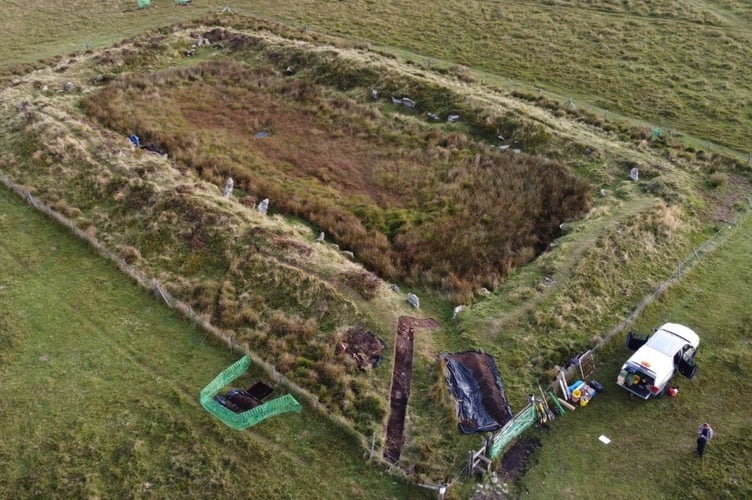ARCHAEOLOGISTS working on a mysterious monument linked to King Arthur have unearthed what experts have described as a 'major revelation'.
Researchers have spent the past two years working on King Arthur's Hall - a rectangular bank of earth and stone located on a remote area of Bodmin Moor - to find out more about its origins.
For years it has been thought that King Arthur's Hall, which is located near Mount Pleasant in North Cornwall, dated back to that of the medieval period.
However, that theory appears to have now changed after detailed findings carried out by the team, working on behalf of the Cornwall Archaeological Unit, revealed some startling outcomes which they believes dates the historic site back 4,000 years earlier to the Neolithic period.
Indeed, archaeologists have now established that it was first constructed in the Middle Neolithic Period some 5,000 to 5,500 years ago around 3,000BC.
Stonehenge was constructed in several phases beginning about 3100BC.
Samples taken from the monument, including pollen, insects and parasite eggs, were radiocarbon dated - and the results were combined with other dating techniques, such as Optically Stimulated Luminescence, to calculate a date between 5,500 and 5,000 years ago.

Dr Tim Kinnaird, from the University of St Andrews, said: "It's extremely exciting that we've finally been able to date construction of this enigmatic monument, previously grounded in myths and legends."
The site has been deemed "at risk" by Historic England because of vegetation growth around it and has 56 standing stones, some of which are buried.
These latest findings, though, have caused great excitement amongst researchers, including Dr Rob Batchelor, director of Quest, an archaeological unit from the University of Reading.
He added: "The wild, remote landscape of Bodmin Moor has inspired centuries of legends, but this extraordinary new finding shows how science can help deliver stories that are just as intriguing.
"Further analysis of these sediment cores may yet reveal more about what our Cornish ancestors were doing there and their impact on the local environment."
Find out more about the Monumental Improvement project at cornwall-landscape.org/project/a-monumental-improvement




